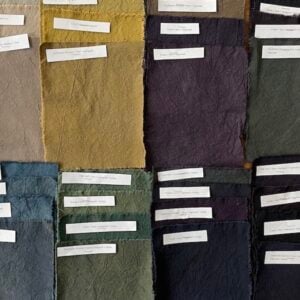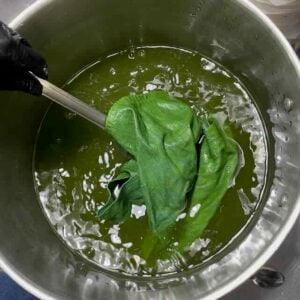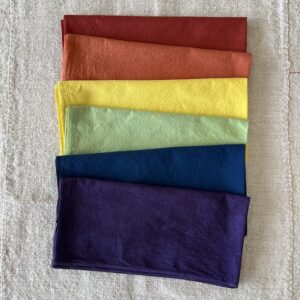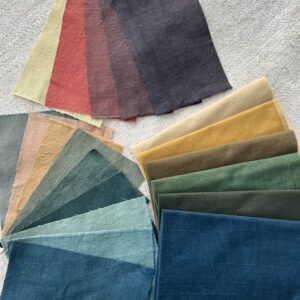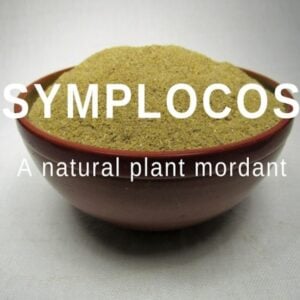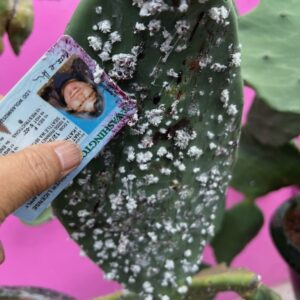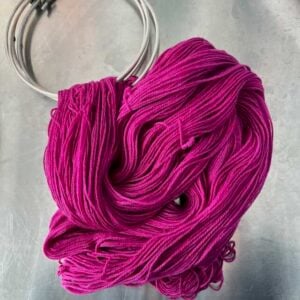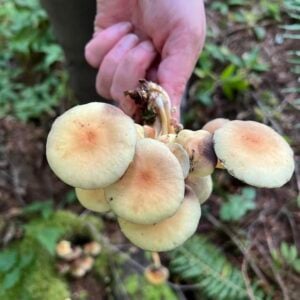Mordant Monday: Tannin Workshop Review
Mordanted fat quarters in iron, marigold, indigo, marigold+indigo, logwood, logwood+ indigo, logwood + marigold and logwood + marigold+ indigo. Both Cara and I taught new online workshops about tannins and natural dyes this month. Cara introduced Tannin Grayscale, a fascinating look into using iron and tannin to create a rich range of deep and moody neutrals. I had envisioned that this would be a workshop on gray, gray and more gray, but the surprise was that her techniques create some beautifully saturated shades. My workshop was Tannin Rainbow, where I concentrated on combining different tannin mordanted fabrics with natural dye … Read more

